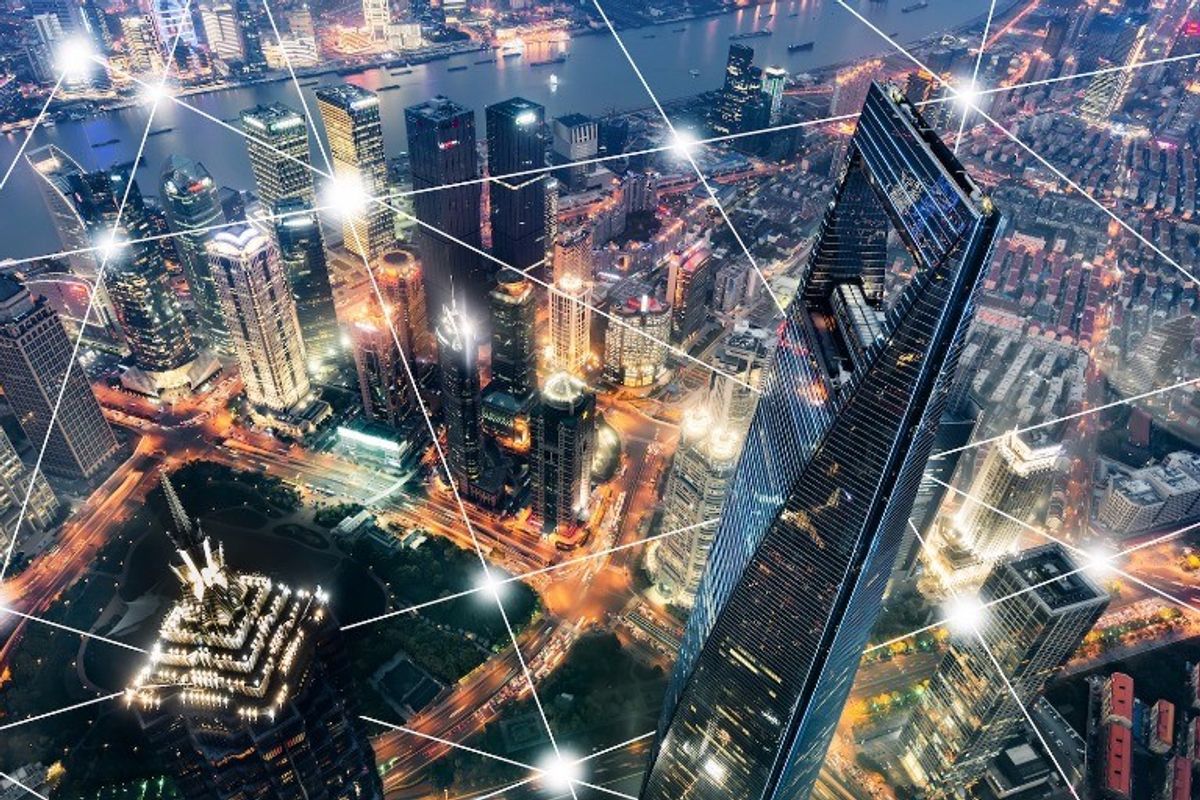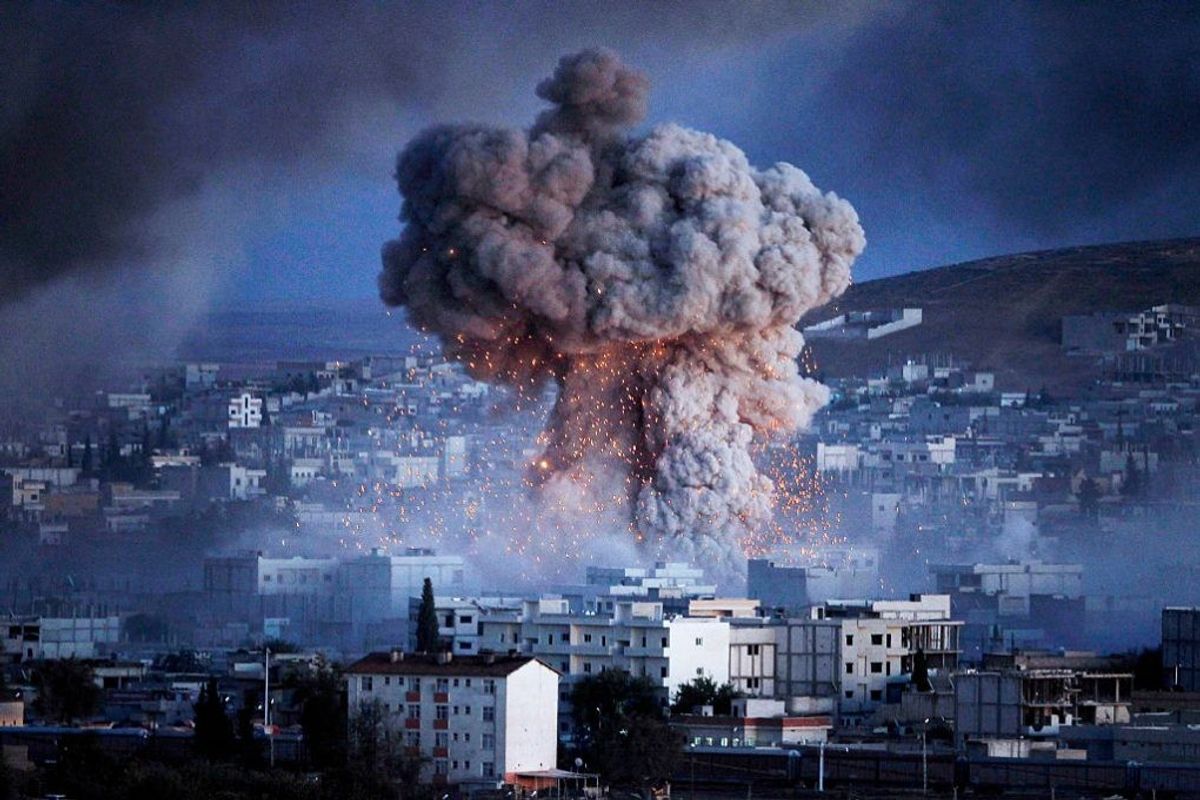In October 2017 – as Iraqi forces mop up in Mosul, fighting rages round Raqqa and Deir Ezzour in Syria, the United States resumes bombing ISIS strongholds near the Libyan city of Sirte, and combat continues in Avdiivka, a frontline town near the city of Donetsk in Ukraine – it’s obvious that conflict is becoming increasingly urbanized. The battle of Mosul alone, with 1.2 million civilians in the city during the fighting, and over 100,000 combatants engaged, was not just the biggest urban battle since the World War II, but the largest of any kind, worldwide, since the start of the century. Even the war in Afghanistan, which for much of the past 15 years has been largely rural, has become increasingly urbanized in recent years. And if conflict in Korea kicks off, nuclear or not, the heaviest destruction will almost certainly fall on the 26 million people of the Seoul-Incheon metropolitan area.
At one level, this is a trivial observation: wars happen where people live. Since April 2008, the planet’s population has been more urban than rural, and analysts estimate an additional three billion urban-dwellers globally by mid-century. To put that in perspective, it took all of human history, right up until 1960, to generate that same number of people across the entire planet, so this is a dramatic acceleration of urban growth that is almost certain to have implications for urban security, as well as for every other aspect of life. In other words, war is become more urbanized because everything is becoming more urban.
At another level, though, the increasingly urban nature of conflict is generating dilemmas for the world’s armed forces, most of which prefer to avoid city fighting whenever possible. The United States and its allies – who care about minimizing civilian casualties and avoiding damage to urban infrastructure – have invested heavily in new technologies for precision close air support, small-diameter bombs, mine-resistant ambush protected vehicles, sophisticated intelligence and targeting systems, and vehicle self-defense suites to help forces survive and operate in cities while doing the minimum possible damage.
This was partly driven by the searing experience of urban counterinsurgency in Iraq, but also by a series of studies on likely future conflict, which showed that conflict in coastal, connected cities – including megacities with populations exceeding 10 million – would be an increasingly likely and demanding future challenge. Likewise, NATO is also putting significant effort into urban operations, through an ongoing multi-year experimental and research program focused on figuring out how better to fight in cities.
Even states like Russia, Syria, and Iran – who care less about collateral damage and civilian casualties, but confront more existential questions closer to home – have been forced to reckon with the need to control, secure, and occupy large cities, such as Aleppo or Damascus, against irregular armed groups of insurgents. Barrel bombs and bulldozers might help you raze an urban area block by block, but as Syrian commanders and their Russian and Iranian advisers have found, you still need to secure the rubble and deal with the surviving population afterward.
Here, the question of scale is key: any time a military force captures a piece of urban terrain, it faces the choice of either completely destroying it and making it uninhabitable – such as the Russians did in Grozny in 1995 or the Syrian government did in parts of Aleppo in 2016 – or deploying large numbers of troops to control and protect it. Cities are sponges that soak up troops.
Insurgencies in cities – and the corresponding counterinsurgency effort that governments confronting such uprisings are forced to engage in – represent a key subset of the future urban conflict challenge. They are not the only one – Mosul, for example, was a conventional street fight in the same vein as Stalingrad or Berlin were during World War II – but they are, in many ways, the most complex and demanding.
In part, this is because of dynamics inherent to insurgency and guerrilla warfare that are not unique to cities. Guerrillas can attack anywhere, so counterinsurgents have to defend everywhere, and this is hugely costly and labor-intensive, whether you are operating in a city or not. Likewise, irregular forces are hard to detect and engage because they tend to be lightly equipped, move fast, and blend into the background.
Conventional forces fighting guerrillas can often bring vastly more firepower to bear but have less knowledge of the terrain and population than their enemies, are bound by more intrusive political and legal constraints, and are constantly being outrun and outmaneuvered by agile, smaller forces. This is as true of jungles or mountains as it is of cities, but urban environments offer insurgents some significant extra advantages.
First, they offer cover and concealment. This may seem counterintuitive: governments can typically marshal much greater presence through police, military, and security services in cities than in the countryside. For this reason, guerrillas tended to hide in the jungle, infest rural villages, or lurk in the mountains for much of history. But recent advances in sensor technology – including airborne synthetic-aperture radars that can peer through jungle foliage, satellite-based imagery, and signals intelligence systems that can detect and locate radio transmissions in remote mountain areas, and platforms like drones that can stay aloft for days to maintain “eyes on” a target – have made rural and remote areas much less safe for guerrillas.
At the same time, rapid unplanned growth, particularly in informal slum settlements that tend to cluster around the edges of large cities, has made many cities much less “legible” for governments. Jumbled houses, cluttered rooftops, narrow winding streets, and crowded urban neighborhoods also make it harder for security forces to operate in urban terrain and allow guerrilla cells to disappear and re-emerge at will.
Second, the connectivity explosion that has transformed cities, especially in the developing world, offers significant new opportunities for urban insurgents. Cellphones, including smartphones and other hand-held mobile technologies, as well as massive growth in access to the internet, and cable and satellite television, have transformed the operating environment for insurgents. Nigeria, for example, had only 30,000 cellphones for the entire country in the year 2000; by 2012, the total was 113 million. In the same timeframe, tools like Google Earth, GPS, smartphone apps for controlling mortar and artillery fire, and social media gave rise to entire new sets of capabilities for insurgents.
Today’s urban insurgents can employ advanced manufacturing, including 3D printing, to create capabilities on-site as needed. They can use social media as reporting networks or command-and-control systems. They can use local light industrial capabilities to create backyard workshops to manufacture weapon systems, and use Google Earth and smartphones to generate precision-fire capabilities approaching those of governments and at far less cost. The hobby drone, in particular, has given urban insurgents the ability to take a low-cost air platform, arm it with a grenade or improvised explosive device (IED), then find and attack targets at will.
These new insurgent capabilities, which of course are also open to state-backed operators and special forces teams that seek to operate below the radar in future cities, have prompted conventional militaries to think of fresh ways to deal with what I have described as “the coming age of the urban guerrilla.” These include sophisticated biometric, facial recognition, and biochemical sensing systems to detect explosive residues or track individuals in crowded spaces, as well as big-data techniques to monitor and respond rapidly to subtle but detectable changes in an urban environment. They include new counter-sniper, counter-IED, and counter-drone technologies, techniques for emplacing and employing mesh-networks of ground-based and airborne sensors, and new organizational structures – smaller, more modular but better protected units that can more effectively operate in urban areas.
But constant co-evolution is the name of the game here. As governments develop new tools or techniques, insurgents and guerrillas are constantly adapting too. Every new iPhone version or DJI hobby drone represents a potential advance in guerrilla technology, as consumer electronics are repurposed and weaponized. Every urban battle, terrorist attack, or incident of unrest generates lessons and techniques that different groups and individuals can share, regardless of ideology. And every new security measure that governments put in place – whether online or in the physical world – creates an adaptation challenge for agile adversaries, both for state and non-state armed groups.
All of this means that the challenge of urban conflict, and within that broad category the even more complex and demanding subset of urban insurgency and counterinsurgency, will be with us for the foreseeable future. And as the planet continues to urbanize and cities keep growing at unprecedented rates, this subset of urban warfare will almost certainly continue to be one of the most dynamic and dangerous of all.








